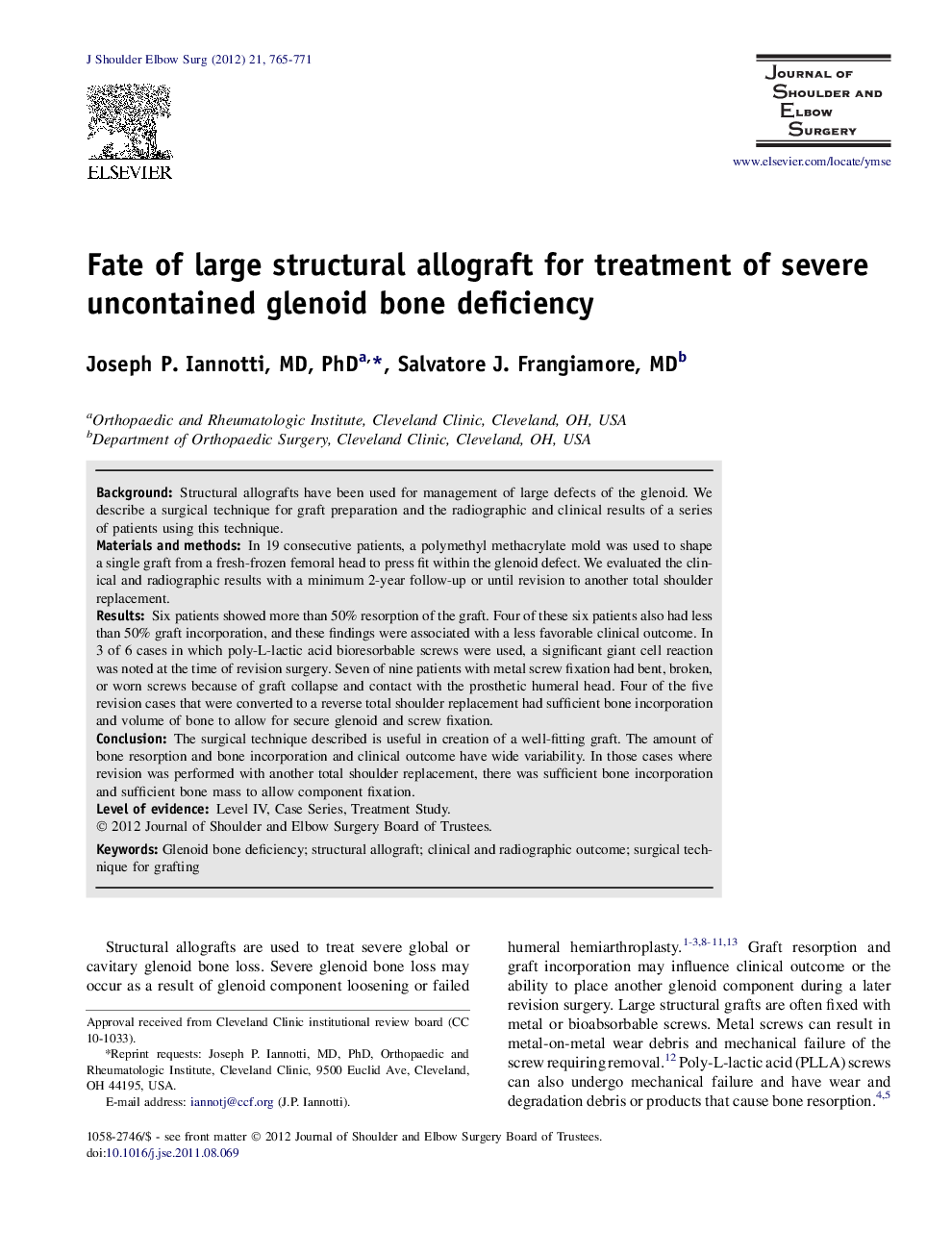| Article ID | Journal | Published Year | Pages | File Type |
|---|---|---|---|---|
| 4074380 | Journal of Shoulder and Elbow Surgery | 2012 | 7 Pages |
BackgroundStructural allografts have been used for management of large defects of the glenoid. We describe a surgical technique for graft preparation and the radiographic and clinical results of a series of patients using this technique.Materials and methodsIn 19 consecutive patients, a polymethyl methacrylate mold was used to shape a single graft from a fresh-frozen femoral head to press fit within the glenoid defect. We evaluated the clinical and radiographic results with a minimum 2-year follow-up or until revision to another total shoulder replacement.ResultsSix patients showed more than 50% resorption of the graft. Four of these six patients also had less than 50% graft incorporation, and these findings were associated with a less favorable clinical outcome. In 3 of 6 cases in which poly-L-lactic acid bioresorbable screws were used, a significant giant cell reaction was noted at the time of revision surgery. Seven of nine patients with metal screw fixation had bent, broken, or worn screws because of graft collapse and contact with the prosthetic humeral head. Four of the five revision cases that were converted to a reverse total shoulder replacement had sufficient bone incorporation and volume of bone to allow for secure glenoid and screw fixation.ConclusionThe surgical technique described is useful in creation of a well-fitting graft. The amount of bone resorption and bone incorporation and clinical outcome have wide variability. In those cases where revision was performed with another total shoulder replacement, there was sufficient bone incorporation and sufficient bone mass to allow component fixation.
